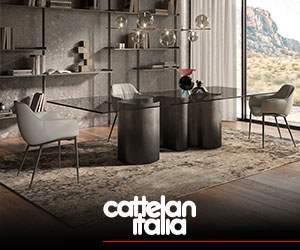[Best_Wordpress_Gallery id=”718″ gal_title=”ECLETTICA-METAMORFOSI”]
Nasce a Vienna un affascinante club jazz dal passato clandestino. Un nuovo spazio dal lusso raffinato.
testo carla bonetti • ph e styling michele biancucci e chiara virgili
Krypt è il nome di questo splendido locale situato a Berggasse, nel centro di Vienna, a soli due isolati dall’ex appartamento-studio di Freud, che ora ospita il Museo Sigmund Freud, appunto.
Posizionato in una delle centralissime vie della città, Krypt nasconde nel suo interrato uno spazio rimasto sconosciuto per diversi decenni. Solo quando l’edificio storico di fine ’700 venne sottoposto a lavori di ristrutturazione, fu scoperta una scala in muratura che conduceva a una cantina nascosta di 250 metri quadrati.
Lo spazio, caratterizzato da volti in mattoni, al tempo fu uno dei club di musica semi legale più in voga della fiorente scena jazz degli anni ’50 e ’60. Da qui la recente trasformazione in un cocktail bar contemporaneo è parsa la sua naturale metamorfosi.
Ristrutturato dallo studio viennese BÜRO KLK in collaborazione con BFA Architects, secondo le più rigorose linee guida volte alla sua conservazione, la struttura ha mantenuto la straordinaria aura del suo patrimonio secolare, integrata dal design degli interni che convoglia il fascino di un passato clandestino, attraverso una palette di materiali eclettici di raffinato lusso, giustapposto al fascino logoro, depositato nel tempo, dei mattoni a vista dell’edificio.
Come sottolineano i progettisti, si trattava poco di reinvenzione e più di un caso di rivelazione del genio loci, riassunto dal titolo del progetto, “Archeology in a Jazz Club”. Accedendo attraverso un’anonima porta che si affaccia su Wasagasse al largo di Berggasse, i clienti si dirigono verso un vestibolo fatto di specchi dove si trova un guardaroba; una scala galleggiante li conduce cerimoniosamente giù, molto sotto dal livello della strada.
È una discesa scenografica, nello spirito di Gloria Swanson di Sunset Boulevard mentre scendeva le scale della sua dimora nella scena finale del film. Sfruttando l’architettura cavernosa della cantina, il locale sotterraneo è costituito da diverse nicchie che sono state trasformate in aree lounge e spazi intimi.
In corrispondenza del bar si trova la più piccola galleria d’arte di Vienna, centrata su uno spazio allungato in cui è collocato il bancone dei cocktail. Strutturalmente, lo spazio sotterraneo doveva essere rinforzato da un pavimento di cemento e un sistema di capriate metalliche. Entrambi, anziché essere trascinati ai margini, sono stati sontuosamente adornati: il primo coperto con uno strato di marmo nero Nero Marquina manualmente posato a spina di pesce, mentre la struttura, un’opera in ferro che segue la tubatura di ventilazione, è stata rivestita in compositi d’oro.
[ap_divider color=”#CCCCCC” style=”solid” thickness=”1px” width=”70″ mar_top=”20px” mar_bot=”20px”]
ECLECTIC METAMORPHOSIS
A captivating jazz club with a clandestine past rises in Vienna: a new, sophisticated and lavish space.
Text by Carla Bonetti • Photography and styling by Michele Biancucci and Chiara Virgili
Krypt is the name of this magnificent bar in Bergasse — in the heart of Vienna —, just two blocks from Freud’s former studio-apartment which now houses the Sigmund Freud Museum. Located in one of the very central streets of the city, Krypts hides a space in its basement, remained unknown for several decades. It was only when this late 18th-century historic building underwent renovations that workers discovered an original masonry staircase that led to a 250-sqm hidden cellar.
This space — distinguished by brick vaults — was one of the most popular music clubs of the thriving jazz scene during the 1950s and 60s. Hence, the recent transformation into a contemporary cocktail bar just seemed to be its natural metamorphosis.
Renovated by the Viennese studio BÜRO KLK in partnership with BFA Architects that followed the most meticulous guidelines to preserve it, the building has kept the extraordinary aura of its centuries-old heritage, complemented by the interior design that conveys the allure of a clandestine past through a palette of sought-after and eclectic materials juxtaposed to the ancient and worn-out charm of exposed bricks.
As designers highlighted, it was no longer a question of reinventing but more like a revelation of the genius loci, summarized in the title of this project: “Archeology in a Jazz Club”. The main entrance is a featureless door that overlooks Wasagasse near Berggasse; customers head towards a vestibule made of mirrors where there is a cloakroom, a floating staircase primly leads them downstairs, way below the street level.
The descent is cinematographic, like Gloria Swanson when coming down the stairs of her abode in the final scene of Sunset Boulevard.
The underground bar exploited the cavernous architecture of the cellar, that’s why it includes several recesses that have been turned into lounge areas and private spaces. The jazz club houses the smallest art gallery in Vienna too: an elongated space around the cocktail bar. The structure of the underground space has been reinforced thanks to concrete floorings and a system with metal trusses. Both, instead of being on the edge, have been sumptuously decorated: the first one with a Nero Marquiña marble layer, hand-laid using a herringbone pattern and the structure — an iron piece that follows ventilation pipeworks — has been coated in gold alloy.






.png)








Seguici su